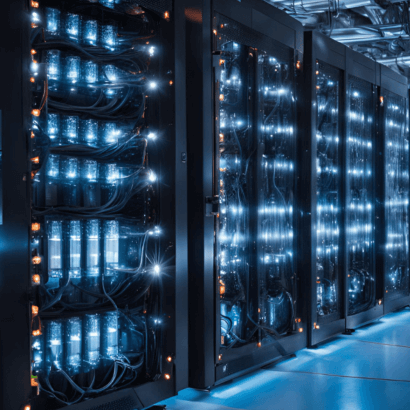A glimpse into fibre internet's exciting developments

In today's digitally driven world, fibre internet stands as the gold standard for speed, reliability, and efficiency. As technology continues to evolve, so does the potential of fibre, pushing the boundaries of what is possible in the realm of online experiences.
This blog explores some of the most promising developments in fibre internet and their implications for you as a consumer or business owner, and the future of connectivity.
1. Next-Generation fibre technologies
Recent advancements in fibre optics have significantly increased data transmission capacity. Multi-core fibre technology, which allows for multiple light paths within a single cable, offers enhanced performance for data centre’s and cloud services, especially in space-constrained urban areas. Space Division Multiplexing (SDM) further amplifies data transmission capabilities, enabling service providers to meet growing demand without substantial infrastructure investments.
How this benefits you:
Improved efficiency in urban areas where space for new installations is limited.
Faster speeds on your connection.
Lower Latency (ideal for video calls and online gamers
Fun fact: The fastest fibre-to-the-home speed generally available in South Africa is 1Gbps. According to MyBroadband, there were recently some astounding test results from one of the first 10Gbps fibre-to-the-home connections in South Africa, the maximum speed reached was 4,3Gbps. (MyBroadband, 2024)
2. Widespread fibre network availability
Efforts to expand fibre internet access to rural and underserved areas are gaining momentum. Governments and private companies are partnering to bridge the digital divide, ensuring that communities historically marginalised in terms of internet connectivity can now benefit from the advantages of high-speed fibre.
How this benefits you:
Better connectivity:
More people will have access to high-speed internet, reducing the digital divide and enabling connectivity in rural and underserved areas.
A practical example of this is how Vuma Reach and Openserve are increasingly available in townships and in small towns that have less economic activity; these areas include but are not limited to Retreat, Vosloorus, Soweto and Grassy Park. You can check if your area is covered at this link.
Greater capacity:
More people can connect simultaneously without experiencing slowdowns, accommodating households with multiple devices.
Increased competition within ISP market:
More service providers in the market, fostering competition that will result in better prices and services for you.
3. The rise of fibre to the home (FTTH)
FTTH brings fibre optic connections directly into homes, delivering unprecedented download and upload speeds that are ideal for streaming, gaming, and smart home applications.
How this benefits you:
Improved reliability:
Fibre optics are less susceptible to interference and weather-related disruptions.
Improved streaming quality:
Higher speeds and bandwidth allow for seamless HD and 4K streaming.
Better work-from-home conditions:
With reliable and fast internet, remote workers can perform their tasks more efficiently, attend virtual meetings without issues
4. Integration of smart technologies
Fibre internet is instrumental in enabling seamless connectivity for smart home devices. Its high bandwidth and low latency support multiple devices operating simultaneously without lag, enhancing the your experience and facilitating innovations like smart energy management and enhanced home security. On top of that, advancements in AI are being integrated into fibre networks to optimise performance and manage traffic more effectively, improving overall reliability and reducing downtime.
How this benefits you:
Improved energy efficiency:
Smart technologies, like thermostats and lighting, optimise energy use, helping you reduce your utility bills and environmental impact.
Improved security:
Smart home security systems, including cameras and alarms, provide real-time monitoring and alerts, enhancing your safety and peace of mind.
Improved convenience:
Smart devices can be controlled remotely via smartphones or voice commands, making everyday tasks easier and more efficient.
5. Sustainability and environmental impact
The fibre internet industry is increasingly focused on sustainability. New developments aim to minimise environmental impact through eco-friendly manufacturing processes and recyclable materials, attracting environmentally conscious consumers who value sustainable practices.
How this benefits you:
Lower energy consumption:
Fibre optic networks typically consume less energy than traditional copper networks, leading to reduced electricity bills for you.
Promotion of sustainable practices:
With better connectivity, you can engage in practices like remote work, reducing commuting and its associated carbon emissions.
Longer lifespan:
Fibre cables are more durable and less prone to damage, meaning fewer replacements and less waste over time, contributing to a more sustainable infrastructure.
Conclusion
The future of fibre internet is not merely about speed; it's about transforming how we connect with the world. With innovations like multi-core fibres, expanded access to underserved areas, smart technology integration, and a commitment to sustainability, fibre internet is poised to redefine the digital landscape. As these developments continue to unfold, you can look forward to a more connected, efficient, and a sustainable future.

 Blog
Blog
Leave a Comment